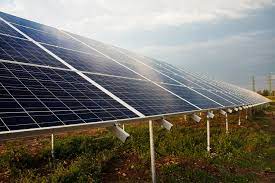The Midwest is witnessing a remarkable transformation as solar farms flourish across its landscape. This surge in renewable energy is reshaping the region’s economy and environmental footprint. Solar farms, sprawling expanses of photovoltaic panels, are becoming a common sight, signaling a significant shift toward sustainable energy. In this article, we will explore the rise of solar farms in the Midwest, their benefits, challenges, and the future they promise.
The Rise of Solar Farms in the Midwest
History of Solar Energy in the Midwest
Solar energy has come a long way in the Midwest. Initially, the region lagged behind coastal states in adopting solar technology. However, over the past decade, advancements in technology and a decrease in costs have spurred a solar revolution. States like Illinois, Iowa, and Minnesota are now at the forefront of this green transformation.
Factors Driving Solar Farm Growth
Several factors contribute to the growth of solar farms in the Midwest:
- Economic Incentives: Federal and state incentives, such as tax credits and grants, make solar projects financially viable.
- Technological Advancements: Improvements in solar panel efficiency and battery storage technology have made solar power more reliable and cost-effective.
- Environmental Concerns: Increasing awareness of climate change and the need for clean energy sources drive support for solar farms.
- Agricultural Synergies: Solar farms provide an alternative revenue stream for farmers, especially in areas with declining crop prices.
Economic Benefits of Solar Farms
Job Creation
Solar farms generate significant employment opportunities. From construction to maintenance, the solar industry creates jobs across various skill levels. According to the Solar Energy Industries Association (SEIA), the solar sector employs hundreds of thousands of workers nationwide.
Boost to Local Economies
Solar projects inject millions of dollars into local economies. They provide income for landowners, increase tax revenues, and stimulate demand for local services and supplies. Communities hosting solar farms often see enhanced infrastructure and public services funded by the increased tax base.
Environmental Impact
Reduction in Carbon Emissions
Solar energy significantly reduces greenhouse gas emissions. By displacing fossil fuel-based power generation, solar farms help mitigate climate change. The Midwest, with its vast agricultural and industrial sectors, benefits greatly from this reduction in carbon footprint.
Land Use and Biodiversity
While solar farms require large land areas, they can coexist with agricultural activities. Practices such as agrivoltaics, where crops are grown beneath solar panels, optimize land use and support biodiversity. Additionally, solar farms often incorporate pollinator-friendly plants, enhancing local ecosystems.
Challenges Facing Solar Farms
Initial Costs
The upfront costs of solar farm development can be substantial. While long-term savings and incentives offset these costs, securing initial funding remains a hurdle for many projects.
Grid Integration
Integrating solar power into the existing grid poses technical challenges. Grid modernization and the development of energy storage solutions are critical to ensuring a stable and reliable power supply.
Regulatory Hurdles
Navigating the regulatory landscape can be complex. Solar projects must comply with federal, state, and local regulations, which can vary widely and impact project timelines and costs.
Case Studies of Successful Solar Farms
Illinois’ Leadership in Solar Energy
Illinois has emerged as a leader in solar energy, thanks to robust state policies and programs. The Future Energy Jobs Act (FEJA) has been instrumental in driving solar development. Notable projects, such as the Prairie State Solar Project, highlight Illinois’ commitment to renewable energy.
Minnesota’s Community Solar Gardens
Minnesota’s innovative community solar garden program allows residents to benefit from solar power without installing panels on their properties. These shared solar projects democratize access to clean energy and have become a model for other states.
Iowa’s Solar-Powered Agriculture
Iowa integrates solar power with its agricultural industry. Solar farms in Iowa not only produce clean energy but also support farming operations by providing shade and reducing evaporation in water-scarce areas.
The Future of Solar Farms in the Midwest
Technological Innovations
Ongoing technological advancements promise to further boost the efficiency and affordability of solar energy. Innovations in solar panel materials, energy storage, and smart grid technologies will enhance the viability of solar farms.
Policy Support
Continued policy support at federal and state levels is crucial for the sustained growth of solar farms. Legislative measures aimed at reducing carbon emissions and promoting renewable energy will drive further investment and development.
Community Involvement
Community engagement and support are vital for the success of solar projects. Programs that involve local communities in planning and benefits-sharing foster positive attitudes toward solar farms and ensure their long-term sustainability.
The flourishing of solar farms across the Midwest is a testament to the region’s adaptability and forward-thinking approach to energy. As technological, economic, and environmental benefits converge, solar farms are set to play a pivotal role in the Midwest’s energy landscape. Embracing solar power not only addresses climate change but also drives economic growth and enhances energy security.




